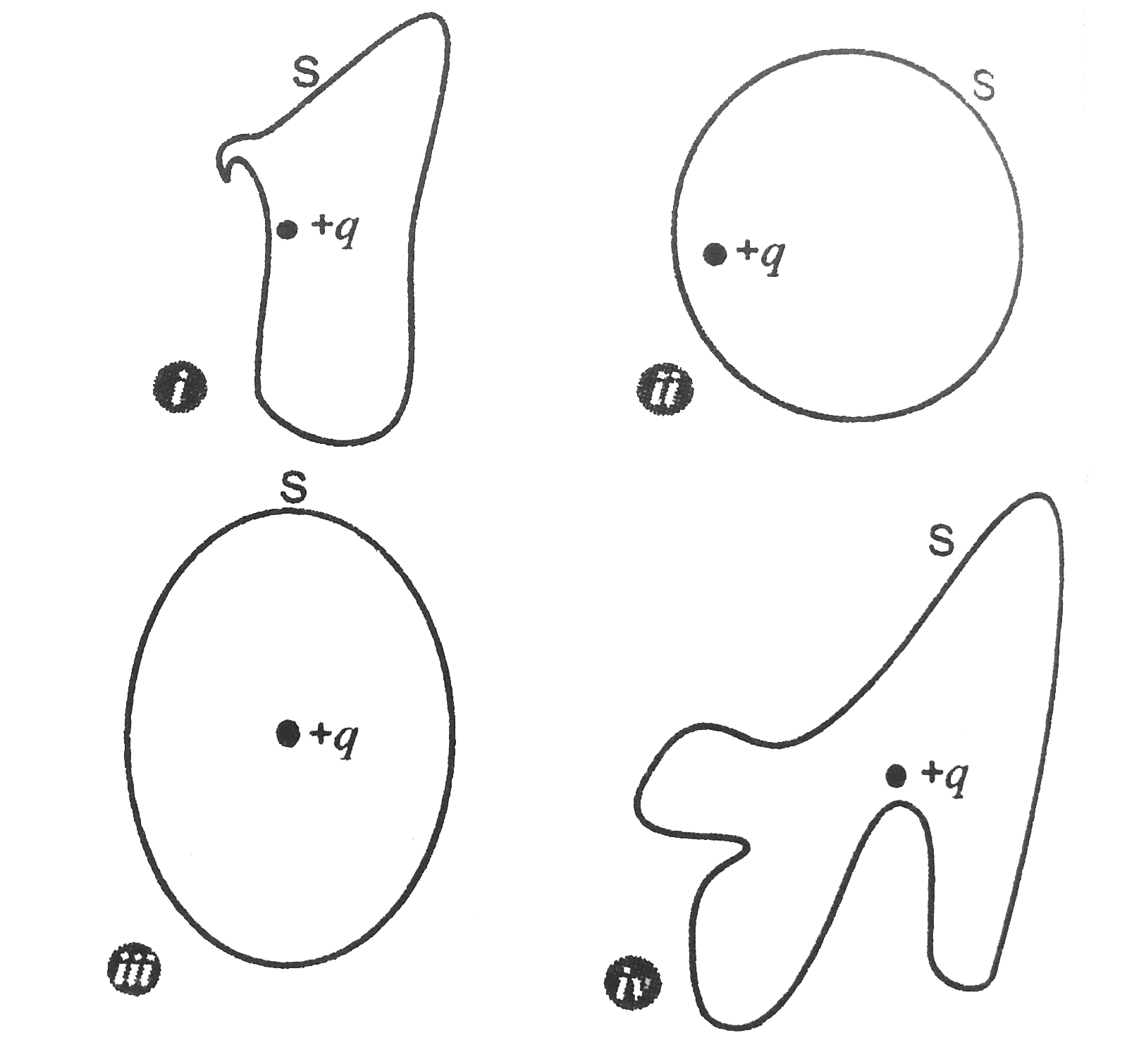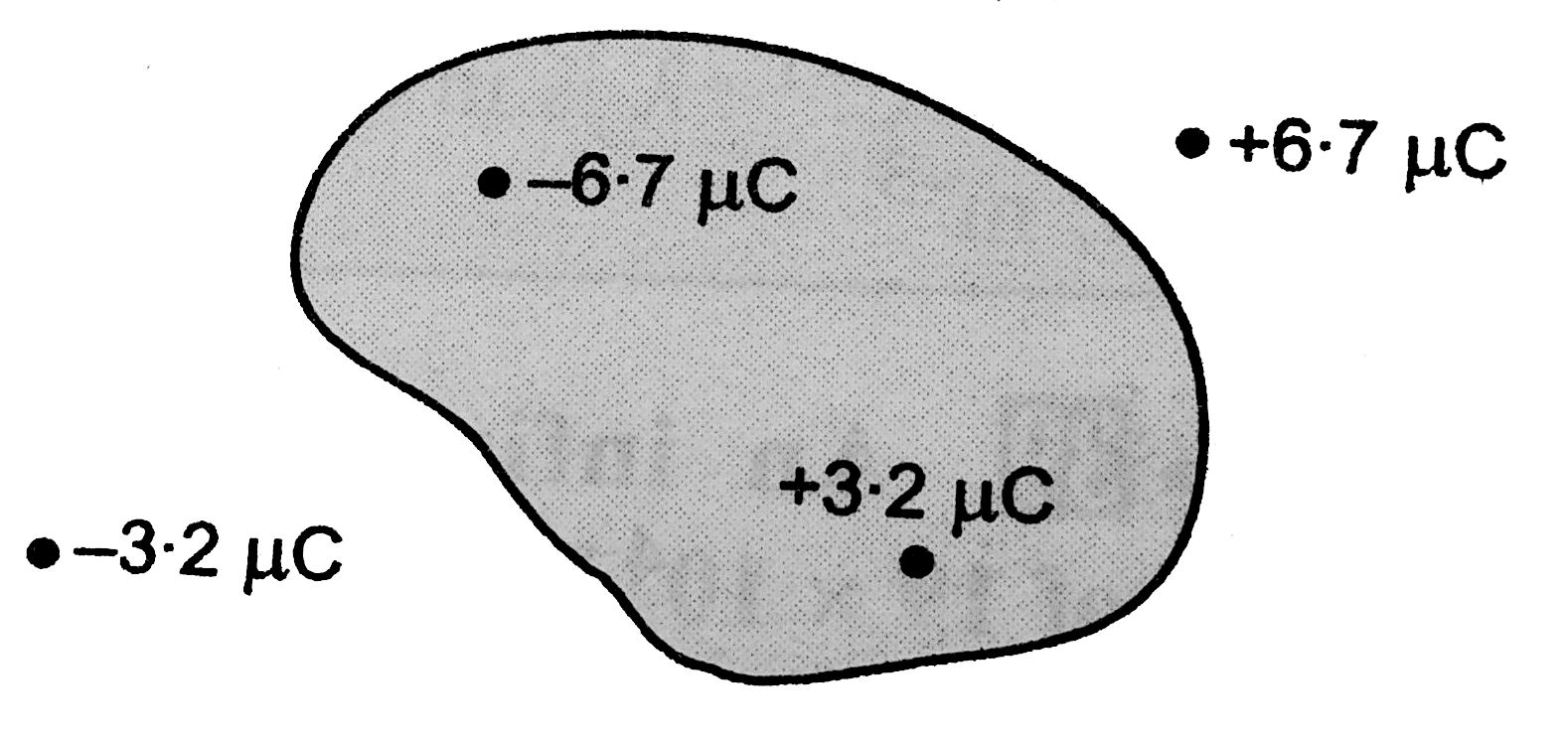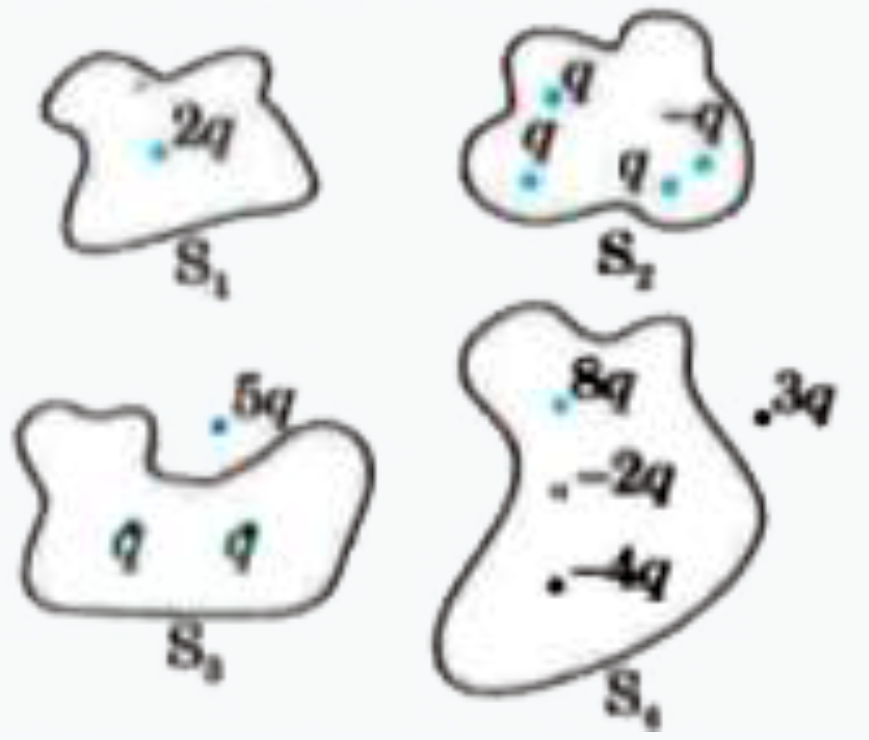The electric flux through the surface

in figure (iv) is the largest
in figure (iii) is the least
in the figure (ii) is same as in figure (iii) but is smaller than figure (iv)
is the same for all the figures
The correct Answer is:D
As per Gauss's theorem in electrostatics, the electric flux throgh a surface depends only on the amount of charge enclosed by the surface. It does not depend on size and shape of the surface. Therefore, electric flux through the surface is the same for all figures.
Topper's Solved these Questions
- ELECTRIC CHARGES AND FIELDSBOOK - NCERT FINGERTIPSCHAPTER - ELECTRIC CHARGES AND FIELDSEXERCISE - EXEMPLAR PROBLEMS
1 Videos
- ELECTRIC CHARGES AND FIELDSBOOK - NCERT FINGERTIPSCHAPTER - ELECTRIC CHARGES AND FIELDSEXERCISE - Assertion And Reason
15 Videos
- ELECTRIC CHARGES AND FIELDSBOOK - NCERT FINGERTIPSCHAPTER - ELECTRIC CHARGES AND FIELDSEXERCISE - Higher Order Thinking Skills
7 Videos
- DUAL NATURE OF RADIATION AND MATTER BOOK - NCERT FINGERTIPSCHAPTER - DUAL NATURE OF RADIATION AND MATTER EXERCISE - Assertion And Reason
15 Videos
- ELECTROMAGNETIC INDUCTIONBOOK - NCERT FINGERTIPSCHAPTER - ELECTROMAGNETIC INDUCTIONEXERCISE - Assertion And Reason
15 Videos
Similar Questions
A thin straight infinitely long conducting wire having charge density λ enclosed bya cylindrical surface of radius r and length lr, its axis coinciding with the length of the wire. Find the expression for the electric flux through the surface of the cylinder.
View SolutionA thin straight infinitely long conducting wire having charge density λ is enclosed by a cylinder surface of radius r and length l, its axis coinciding with the length of the wire. Find the expression for the electric flux through the surface of the cylinder.
View Solution
Knowledge Check
A plane surface of element of area 1mm2 is situated in a uniform electric field of intensity 9×106N/C with its plane making an angle of 30∘ with the direction of the field. The electric flux through the surface element is
A4.5Nm2/CB3.5Nm2/CC0.5Nm2/CD2.5Nm2/CA cubical guassian surface encloses 24 C of charge. The electric flux through each surface of the cube is
A24ε0V−mB4ε0V−mC12ε0V−mD2.4ε0V−mIn a region of space, the electric field is given by →E=8ˆi+4ˆj+3ˆk. The electric flux through a surface of area 100 units in the xy plane is
A800 unitsB300 unitsC400 unitsD1500 units
An arbitrary surface encloses a dipole. What is the electric flux through this surface ?
View SolutionFig shows a closed surface surrounding some electric charges (a) what is the net electric flux through the surface? (b) Is the electric flux directed inward or outward from the surface ?

View SolutionFour closed surfaces and corresponding charge distributions are shown below.

Let the respective electric fluxes through the surface be ϕ1,ϕ2,ϕ3 and ϕ4.Then:
View SolutionA point charge of 4.427 μC is at the centre of a cube Gaussian surface 9.0 cm on the edge. Find the net electric flux through the surface. (ε0=8.854×10−12C2N−1m−2)
View SolutionAn arbitary surface enclose an electric dipole of dipole moment 20×10−6 C-m, What is the electric flux through this surface?
View Solution
